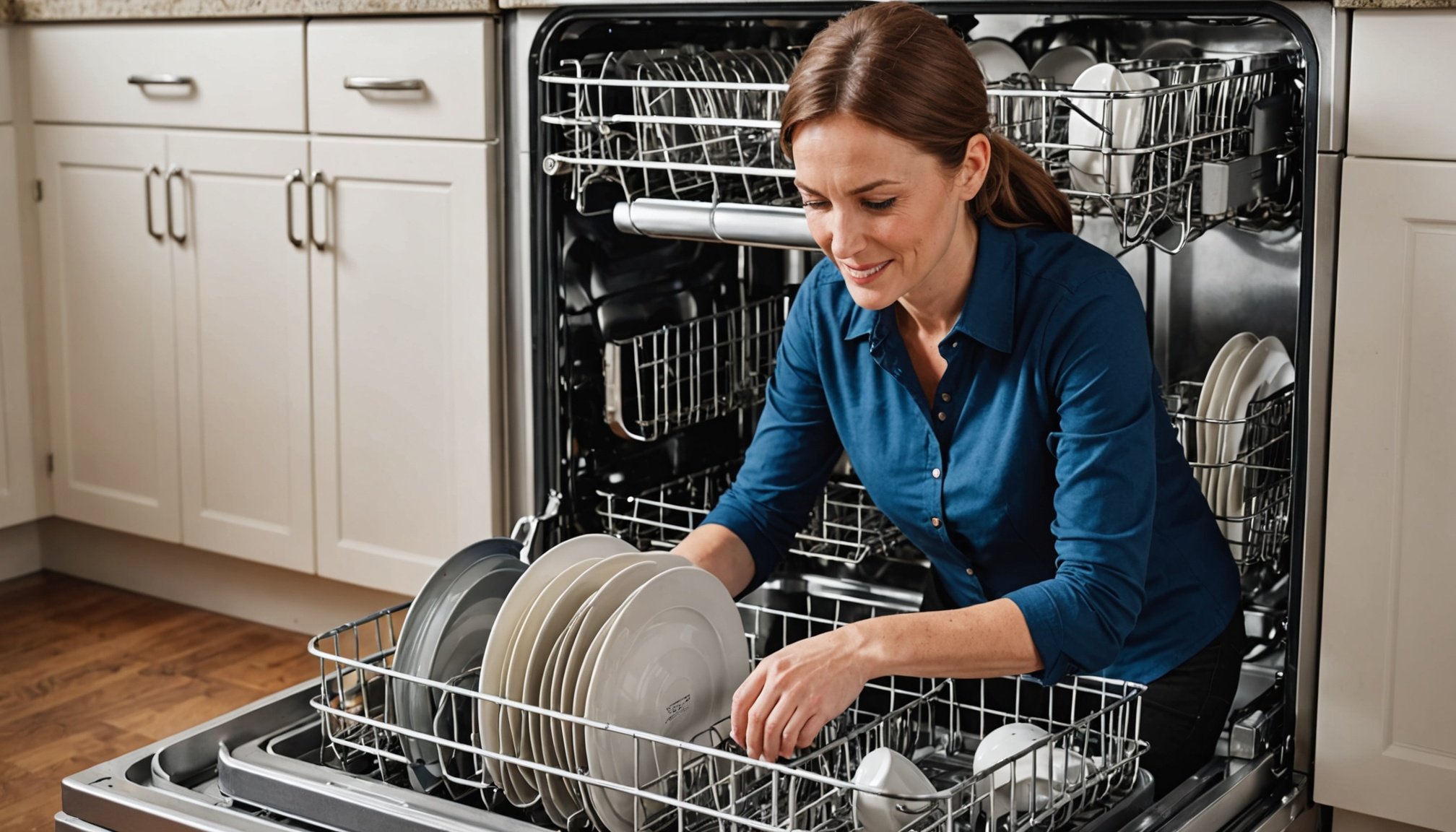Maximize Energy Savings: Best Strategies for Using Your Dishwasher During Peak Hours
When it comes to managing your household's energy consumption, one of the often-overlooked but significant contributors is the dishwasher. Here’s a comprehensive guide on how to use your dishwasher efficiently, even during peak hours, to save energy and money.
Understanding Peak Hours and Energy Rates
Before we dive into the strategies for using your dishwasher efficiently, it's crucial to understand the concept of peak hours and how they affect your energy bills. Peak hours typically occur between 4-9 PM, when the demand for electricity is at its highest. During these times, energy rates are usually more expensive compared to off-peak hours, which are usually overnight when grid consumption is lower.
Have you seen this : Mastering Time: Your Guide to Selecting a User-Friendly and Precise Kitchen Timer
How Peak Hours Impact Your Energy Bill
- Higher Rates: Using your dishwasher during peak hours means you're paying more per kilowatt-hour (kWh) compared to off-peak times.
- Grid Load: Running heavy appliances like dishwashers during peak hours adds to the overall load on the power grid, which can lead to higher energy costs and potential grid strain.
Optimizing Dishwasher Use for Energy Efficiency
To make the most out of your dishwasher while minimizing energy use, here are some practical tips:
Run Your Dishwasher During Off-Peak Hours
Running your dishwasher during off-peak hours can significantly reduce your energy costs. For instance, if you have a time-of-use (TOU) plan, specify your peak and off-peak rates and times to optimize your energy use. Charging your electric vehicle or running your dishwasher at night can save you a substantial amount over time.
Topic to read : Mastering the Art of Cheese Boards: A Guide to Selecting the Perfect Board for Your Next Gathering
Choose the Right Cycle
Modern dishwashers come with various cycles designed to cater to different types of dishes and levels of soil. Here are some tips on choosing the right cycle:
- Normal Wash: Ideal for everyday dishes.
- Heavy Duty or Pots & Pans: For heavily soiled items.
- Quick Wash or 1-Hour Wash: For lightly soiled dishes when you're in a hurry.
- Eco Cycle: Uses lower water temperatures and extended wash times to save water and energy.
Key Tips for Efficient Dishwasher Use
Here are some detailed tips to help you use your dishwasher more efficiently:
- Full Loads Only: Running a full load in your dishwasher is more energy-efficient than running multiple partial loads. Make sure to fill the racks but avoid overloading, which can reduce cleaning efficiency.
- Pre-Rinsing: Avoid pre-rinsing your dishes unless they are heavily soiled. Modern dishwashers are designed to handle food residue effectively, and pre-rinsing can waste water and energy.
- Hot Water Temperature: Ensure the water temperature going into your dishwasher is at least 120 degrees Fahrenheit. This can be checked by running hot water from your kitchen sink faucet and measuring it with a cooking thermometer. Adjust your water heater temperature accordingly.
- Clean Spray Arms and Filters: Regularly clean the spray arms and filters of your dishwasher to ensure optimal cleaning performance and prevent longer cycle times.
Energy-Efficient Dishwasher Features and Settings
Using an energy-efficient dishwasher and optimizing its settings can make a significant difference in your energy savings.
Energy Star Certification
Look for dishwashers with the Energy Star certification, which indicates that the appliance meets energy efficiency standards set by the U.S. Environmental Protection Agency. These dishwashers use less water and energy compared to conventional models.
Eco Mode and Heated Dry Settings
- Eco Mode: Many modern dishwashers come with an eco mode that uses lower water temperatures and extended wash times to save water and energy.
- Heated Dry Setting: Turn off the heated dry setting to save energy. Dishes will dry without using the heating element, which can significantly reduce energy consumption.
Automating Your Dishwasher Use
To make the process of saving energy more automatic, consider the following:
Smart Plugs and Timers
- Smart Plugs: Use smart plugs to automate when the power is connected to your dishwasher. You can set the time for the dishwasher to run during off-peak hours.
- Timers: Install timers to ensure your dishwasher runs only during specified times, helping you avoid peak hours.
Additional Tips for Home Energy Efficiency
While focusing on your dishwasher, it's also important to consider other ways to save energy in your home.
Energy-Efficient Lighting
Replace incandescent and compact fluorescent light bulbs (CFLs) with light-emitting diode (LED) bulbs. LEDs are more energy-efficient, last longer, and help you save money on your electric bill. Remember to turn off lights when not in use.
Smart Thermostats
Install and set a programmable or smart thermostat. Setting the temperature to 65 degrees in winter and 78 degrees in summer while at home, and switching to energy-saving mode when away, can help save energy.
Avoiding Energy Vampires
Unplug non-essential appliances and electronics when fully charged and not in use. Consider installing advanced power strips or smart plugs that can automatically turn off idle electronics, helping you avoid standby power consumption.
Practical Examples and Anecdotes
Here are some real-world examples to illustrate the impact of these strategies:
Case Study: Shifting to Off-Peak Hours
A family in California shifted their dishwasher runs from peak hours to off-peak hours using a smart plug. Over a year, they saved approximately $50 on their energy bill, which might not seem significant but adds up when combined with other energy-saving practices.
Real-Life Tip: Cleaning Filters Regularly
A homeowner noticed that their dishwasher cycles were taking longer than usual. After cleaning the clogged filters and ensuring the spray arms were clear, they observed a significant reduction in cycle times and improved cleaning efficiency.
Detailed List of Energy-Saving Tips
Here is a comprehensive list of tips to help you save energy when using your dishwasher:
- Run full loads: Ensure the dishwasher is fully loaded but not overloaded.
- Choose the right cycle: Select the cycle that best matches the level of dirt and the type of dishes.
- Avoid pre-rinsing: Unless dishes are heavily soiled, avoid pre-rinsing to save water and energy.
- Check water temperature: Ensure the water temperature is at least 120 degrees Fahrenheit.
- Clean filters and spray arms: Regularly clean the filters and spray arms to maintain efficiency.
- Use eco mode: Opt for the eco mode or energy-saving cycle.
- Turn off heated dry: Disable the heated dry setting to save energy.
- Run during off-peak hours: Use smart plugs or timers to run the dishwasher during off-peak hours.
- Use Energy Star certified appliances: Look for the Energy Star certification when purchasing a new dishwasher.
Comparative Table: Energy Efficiency of Different Dishwasher Cycles
Here is a comparative table to help you understand the energy efficiency of different dishwasher cycles:
| Cycle Type | Water Temperature | Energy Consumption | Cycle Time |
|---|---|---|---|
| Normal Wash | Hot | Medium | 2-3 hours |
| Heavy Duty | Hot | High | 3-4 hours |
| Quick Wash | Warm | Low | 1 hour |
| Eco Cycle | Cold | Very Low | 2-3 hours |
| Rinse Only | Cold | Very Low | 30 minutes |
| Sanitize | Hot | High | 3-4 hours |
Quotes and Insights from Experts
- US Department of Energy: "Unplugging appliances like your TV, computer, printer, coffee maker or even your electric toothbrush when not in use can save the average household up to $100 per year."
- SPAN: "By shifting your appliances to consume energy during off-peak times, when rates are lower, you can save a significant amount over time."
- Los Angeles Department of Water and Power: "Small, easy changes to your energy usage can add up to big savings Check out a few simple tips to live a more conservation-focused lifestyle at home."
Saving energy and money by optimizing your dishwasher use is a simple yet effective strategy. By understanding peak hours, choosing the right cycles, and using energy-efficient features, you can make a significant impact on your energy consumption. Remember, every small change adds up, and combining these tips with other energy-saving practices can lead to substantial savings over time.
Final Tips for Your Home
- Monitor Your Energy Use: Keep track of your energy consumption to identify areas where you can improve.
- Educate Your Family: Share these tips with your family to ensure everyone is on board with energy-saving practices.
- Regular Maintenance: Regularly maintain your appliances to ensure they run efficiently.
By following these strategies and tips, you can not only save energy but also contribute to a more sustainable future for your home and the environment.











